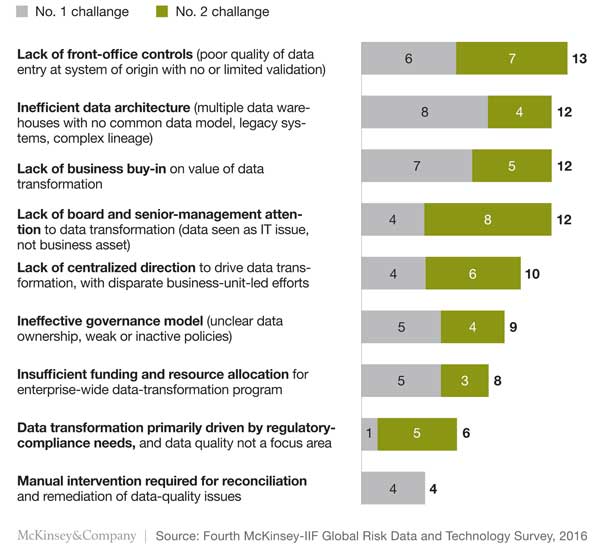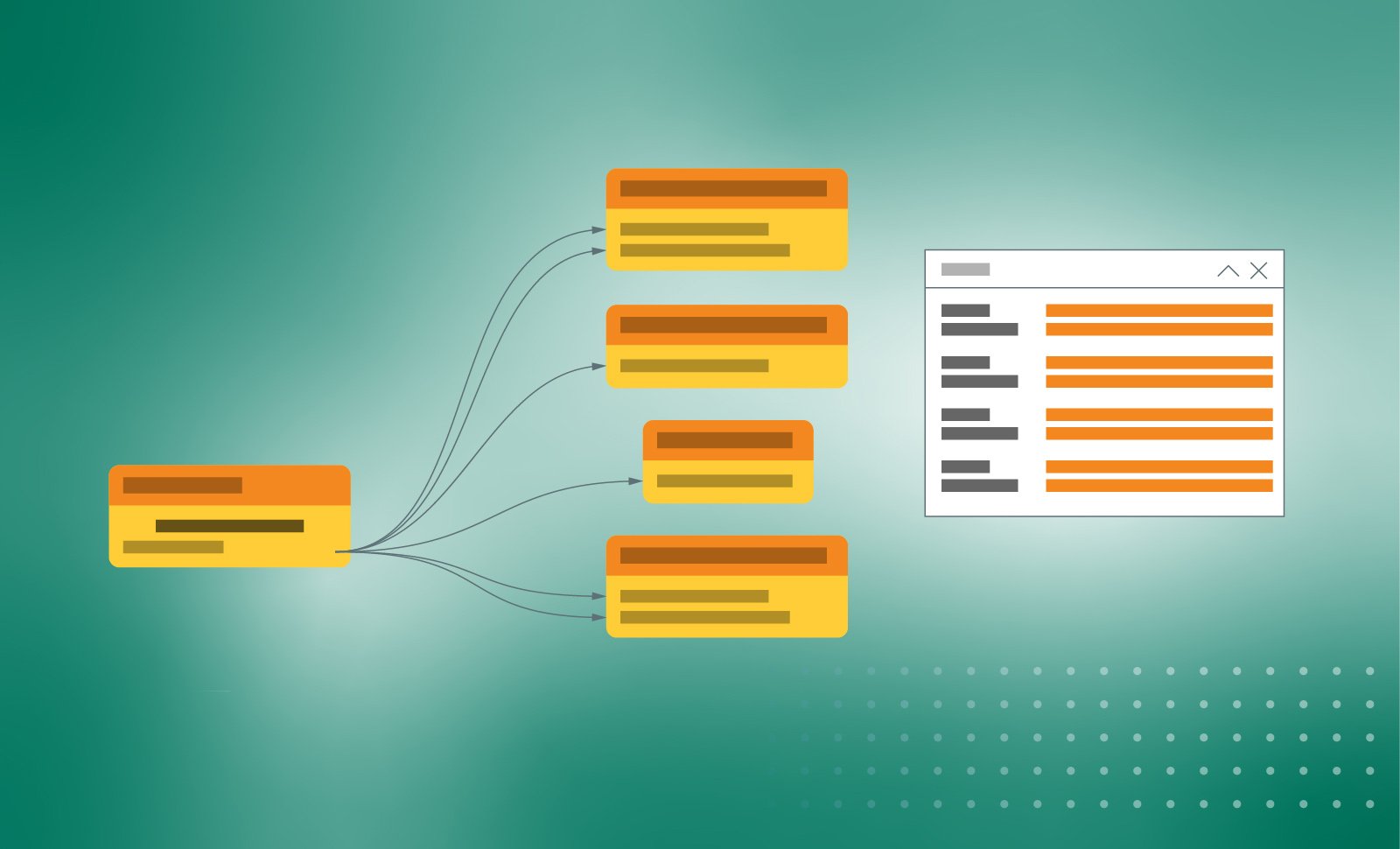In 2007, the United States experienced the largest financial crash since The Great Depression. The crisis, which started in the United States as a result of a collapse in the housing market, threatened to destroy the entire international financial system. The Great Recession led to a loss of more than $2 trillion in global economic growth and the fall of one of the world’s largest banks, Lehman Brothers. Ultimately, this crisis illustrated the lack of regulations both in the housing and banking industries; the Great Recession demonstrated the banks’ inability to efficiently and effectively provide a clear picture of the risks in an organization and manage these risks in a timely manner. As a result, The Basel Committee on Banking Supervision issued BCBS-239 in January 2013. BCBS-239 called out banks for not doing enough to assuage risk and adhere to regulatory compliance.
Today, banks struggle to comply with BCBS-239 due to an inefficient data architecture within their organization. According to a study conducted by Mckinsey, having an inefficient data architecture is the number one challenge banks face when trying to comply with BCBS-239. In other words, the biggest challenge that banks face is pulling relevant information from complex data structures because data is stored in multiple data warehouses without a common data model. If banks do not follow BCBS-239 they could experience massive regulatory and reputation risks, as well as put strains on management capacity by investing in the wrong solutions.

BCBS-239 mandates a new reporting cycle in which overall risk reports are prepared quarterly. These risk reports must be created using an automated reporting system, not manual data deliveries. In other words, excel spreadsheets are no longer permitted as a form of documentation. As a result, implementing automated data lineage is imperative for financial firms; it must be a top strategic initiative for all banks.
Luckily, with Collibra Lineage, financial firms can more easily comply with regulations by contextualizing their data. Collibra Lineage supports BCBS-239, GDPR, CCPA and other compliance efforts by tracking how data flows through systems from source to destination or report. Specifically, with BCBS-239, banks are required to report thousands of metrics to regulators, and often these metrics have to be generated by cobbling together data and information from diverse systems. Collibra Lineage helps banks deliver on these requests by linking together various systems and processes and giving them a complete picture of how their data flows across the enterprise — at the conceptual, logical and physical layer. Additionally, with Collibra Lineage, banks can easily export lineage diagrams in different file formats, such as PDF, PNG and CSV, for seamless reporting to regulators.
Let’s get technical
In order to create a risk report, banks must uncover the data that is upstream to the point of origin. A qualified report must trace back to the data’s upstream processes and field. It is also important that at each stage you can see the IT controls and the business controls to ensure the data has not been manipulated. Ultimately, with BCBS-239, regulators want banks to show that they are in control of their data. They want to make sure banks are confident in their reports and have pinpointed the possible risk areas.
While achieving BCBS-239 compliance may sound simple, it is an incredibly arduous and time consuming task. At large banks, it can take hundreds of people to collect this information from numerous departments and divisions. And with BCBS-239, banks must report annually.
So how does Collibra’s automated data lineage help banks comply with BCBS-239?
Firstly, although BCBS-239 may seem daunting, Collibra Lineage eases the pain by automatically extracting lineage from various source systems and keeping it up to date. This automated capability saves 95% of IT’s time manually mapping lineage. In addition, since BCBS-239 is an annual regulation, having current and consistent data is crucial for creating a quality report. BCBS-239 also requires automated reporting; regulators no longer accept excel spreadsheets. Thus, with automated data lineage, banks can follow the regulations of BCBS-239, while also freeing up IT’s time to focus on strategic initiatives.
Secondly, Collibra Lineage shows detailed technical lineage and indirect lineage, which helps contextualize your data so you can better understand and trust your data. Our detailed technical lineage view allows you to see transformations, drill down into table, column, and query-level lineage, and navigate through your data pipelines. With the technical and indirect lineage views, you can provide all the necessary information to regulators for BCBS-239 compliance. The combination of technical and indirect lineage gives you visibility into risk points within your organization. For example, indirect lineage allows you to see the origins of your data and trust that your data is accurate and complete. It shows the participating indirect relationships that influence the movement of data, such as conditional statements and joins. Recognizing these risk points is the most important mandate of BCBS-239 because it enables your organization to make the necessary adjustments to avoid inaccurate reporting.
Compliance and Business Value Coming Together
Regulatory compliance should be a top priority for every financial institution. In order to function effectively and efficiently, banks must invest in an automated data lineage solution to help them comply with BCBS-239. However, data lineage is more than just a regulatory compliance solution. According to Mckinsey, “regulatory demands themselves can spur value creation.” With Collibra Lineage, you can scale your investment to assist in all departments (business, IT, compliance, marketing). In fact, investing in automated data lineage can help you unlock the value of your data for business initiatives. With Collibra Lineage, IT and the business user can work simultaneously to become a data-driven company. They both are faced with the same challenge — to easily and quickly learn more about their data landscape. They need more information about their data; they need additional context to be able to use data for their purposes. Collibra Lineage provides this information through our business and technical lineage views, making Collibra Lineage a cross functional and practical solution. Ultimately, Collibra’s automated data lineage helps companies more easily comply with regulations, which frees up time to focus on innovation and growth; this makes Collibra Lineage a strategic investment both for regulatory alignment and business initiatives.
Want to learn more about the business view in Collibra Lineage? Stay tuned for next week’s blog on the benefits of business lineage!
—
Sources:
Mckinsey
Protiviti
Bearing Point




